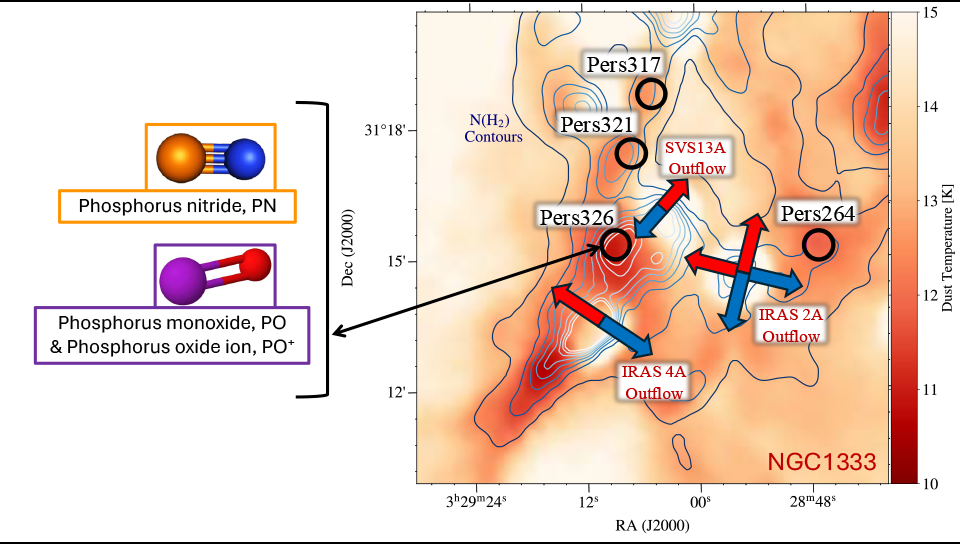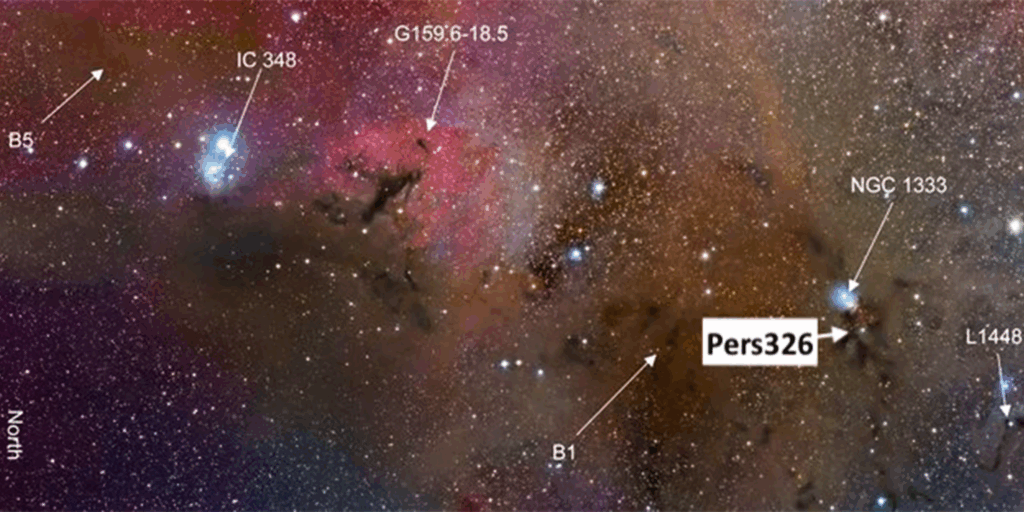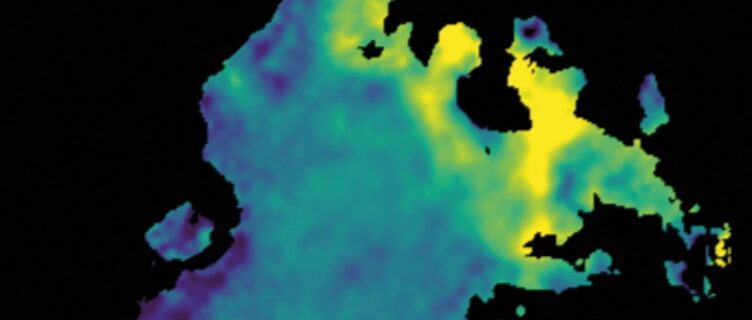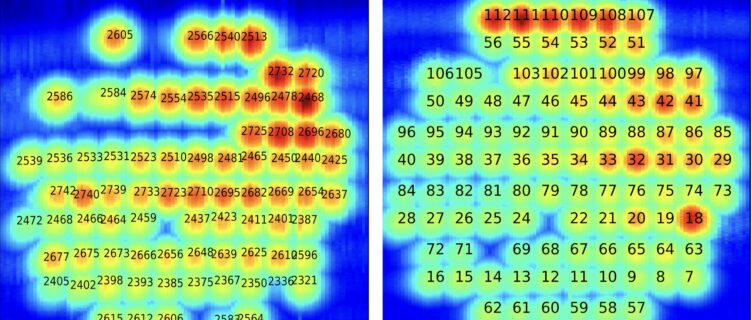A rare discovery is reshaping our understanding of life’s building blocks in space: For the first time, phosphorus-bearing molecules have been found in one of the coldest and earliest stages of low-mass star formation, in a so-called starless core, a dense pocket of gas and dust on its way to become a star. This breakthrough, made using the IRAM 30-meter and Yebes 40-meter telescopes, sheds light on the origin of phosphorus, a key ingredient in DNA and RNA, and how it may become available to emerging planetary systems. By identifying phosphorus mononitride (PN), phosphorus monoxide (PO), and the phosphorus oxide ion (PO⁺) in a pristine interstellar cloud, researchers offer new insight into the chemistry that precedes the birth of stars and planets.
Phosphorus is a critical element in many biological molecules found on Earth, including DNA and RNA. In space, however, phosphorus is more than a million times less abundant than hydrogen, making it a challenge to study. Still, for decades scientists have used sensitive radio telescopes to search for phosphorus-bearing molecules in the dust shells around dying stars and in regions around young forming stars. Never before, however, have these molecules been detected in a low-mass region that has not yet begun forming a star.
A starless core is a cold cocoon of dust and gas that marks one of the earliest stages of star formation. By investigating the inventory of phosphorus, astronomers aim to understand the initial conditions and physical processes that shape the chemical environment of future planetary systems.
Even though the gas in a starless core is extremely cold (roughly 10 Kelvin or -263 Celsius), it contains enough energy for the molecules to rotate and move around. Each molecule has a characteristic energy pattern, which makes it possible to identify it through the millimeter waves it emits.
In a new study published in The Astrophysical Journal Letters, astronomers used the IRAM 30-meter and the Yebes 40-meter telescopes to detect phosphorus mononitride, PN, phosphorus monoxide, PO, and the phosphorus oxide ion, PO+, for the first time toward a starless core. This core is located at a distance of 1000 lightyears in the Perseus Star-Forming Cloud within our own Galaxy, the Milky Way. The discovery was made by an international team led by Samantha Scibelli, a Jansky Fellow at the National Radio Astronomy Observatory (NRAO). The team included scientists collaborating across six institutions in the United States, Spain and Japan.
Phosphorus in the form of PN was detected serendipitously in just one starless core, ‘Pers326’, while the researchers were surveying over a dozen cores across Perseus with the Yebes 40-meter telescope. Follow-up observations with the IRAM 30-meter telescope confirmed the identification of PN, and also revealed the presence of PO and PO+. These telescopes were well-suited for studying nearby starless cores.
The detections of PN, PO and PO+ in this starless core suggest that shocks must be responsible for releasing phosphorus-bearing molecules from dust grains into the gas phase, allowing them to be detectable by radio telescopes.
The amount of phosphorus-bearing molecules detected toward this starless core agrees quite well with values found in star-forming systems in later stages of evolution, including those observed in comets of our own planetary system. These findings suggest that the phosphorus inventory is set early on during star and planet formation.
Despite the discovery, many questions remain. The physical origin of the shocks in this region is still uncertain, and the chemical pathways that are needed to form PN, PO and PO+ in the gas-phase are not fully understood yet. The team plans to follow-up these initial results with more detailed modeling and observational studies. Interferometers like NOEMA and ALMA will follow up to further constrain the physical distribution and shed new light on the chemical pathways that drive the emergence of these molecules.
The research is presented in a paper, “First detections of PN, PO and PO+ toward a shocked low-mass starless core” and has been published in ApJ Letters [https://doi.org/10.3847/2041-8213/add344].


Visual wavelength image of the Perseus molecular cloud. The starless core Pers326 is located in NGC 1333. Perseus is well-studied region of low-mass star formation in our Galaxy. Image credit: Adam Block. Originally published in Bally et al., 2008.
Our latest updates
Explore all the latest news from our research and technology groups and never miss out on important upcoming events.















